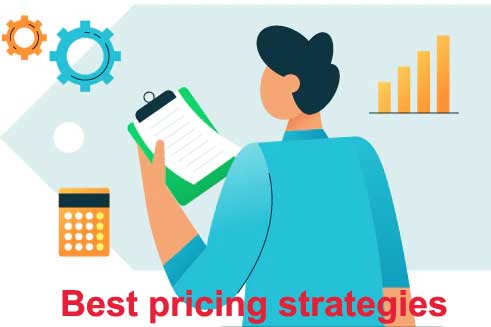There are a lot of issues on the agenda for strategic planning when starting a new business venture. Pricing your goods and services is a critical component of a successful business plan and, ultimately, a successful enterprise. There are many pricing techniques available, but some are more suitable for a certain kind of business than others.
What is a Pricing Strategy?
Pricing strategies are the procedures and methods companies employ to determine the costs of their goods and services. Product pricing strategy is the process by which you decide what to charge for your products if the price is what you charge for them. An Amazon Price Tracker can help you track products’ prices and decide what suits you better.
Best Major Pricing Strategies for Business
Here is 6 best major pricing strategies for business. Follow this strategies for your business and increase more product sales.
1. Price Skimming
Price skimming is a business tactic used by companies that charge the highest prices possible for new items and then gradually lower the price over time. With this kind of pricing strategy, costs decline when things reach the end of their useful lives and lose their relevance. Price skimming is frequently used by companies that market novelty or high-tech goods.
2. Bundle pricing
A type of promotional pricing known as bundle pricing involves the sale of two or more products or services that are similar for a single price. Adding value to clients’ purchases or up selling them additional products is effective through bundling. Restaurants, spas, and retail establishments are just a few of the numerous companies that use this kind of pricing strategy.
3. Competitive Pricing
The competitive pricing method fixes the cost of your goods or services at the going rate for the industry. If your business operates in a crowded market, the fact that all other products in your sector influence your pricing will help you maintain your competitive edge. As long as your choice remains within the range of pricing set by all of your industry’s competitors, you are free to select to price your goods above or below the going rate.
4. Premium pricing
A premium pricing approach is precisely what it sounds like. The goal is to charge a premium price to make a product or service appear more valuable. It is sometimes referred to as prestige or premium pricing. Luxury firms in the fashion and hotel sectors employ premium pricing the most.
5. Dynamic pricing
The demand for a product is matched by dynamic pricing. This pricing method, often referred to as demand pricing, is used most frequently when the quantity of the commodity changes on a daily basis.
6. Economy pricing
Economy pricing continually undercuts rivals to generate profits from large sales volumes. Low production costs are typically associated with this kind of pricing strategy
How Does a Price Tracker Help You Create a Pricing Strategy?
Your organization needs a sound pricing plan. You become more competitive, and your profit margins are also boosted by it.
People like to shop online these days since it is convenient, simple, and offers a wide variety of products. Additionally, it is simple for them to compare a product’s pricing across other websites and select the best deal.
Nevertheless, if you don’t know how to price your goods, you run the risk of losing lots of clients and brand value. Understanding the state of the market is crucial for this reason. Additionally, you must examine your competitors’ pricing plans, as well as the places and prices where they sell.
Utilizing a price tracking tool to keep tabs on the pricing of your rivals and aid in the optimization of your pricing plan is an effective way to accomplish this.
To track, examine, and compare product pricing from rival websites, one uses a price tracking application. It is also known as a price monitoring tool because it collects data besides price, such as a product’s availability, promotions, visual representation, etc.
With the help of these technologies, you may automate and strengthen pricing optimization through dynamic pricing analysis. They also make it possible for you to forecast changes in the volume of demand linked to a pricing model and aid in setting the appropriate price.
For well-established organizations to continue producing the most profit possible, it’s also essential to monitor market prices. Additionally, taking into account elements like product demand, required margins, costs in domestic and foreign markets, and more would be beneficial. In that instance, your profitability can be impacted if you don’t have the appropriate pricing plan for your products.
Conclusion
It is critical to recognize that no organization can have the ideal pricing plan. Flexibility and adaptability are necessary for response to market and competitive changes. While one price plan might be ideal for your product, in the beginning, it might lose its effectiveness later. A successful business is ready to change its approach over time to retain profitability and a competitive edge. Still, if you want to ensure that your firm succeeds, you must have a well-thought-out price strategy from the beginning.
